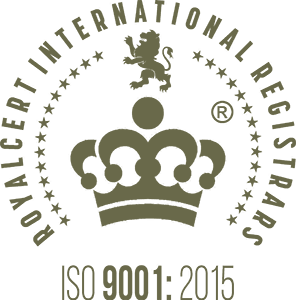Opportunities in Aviation Infrastructure in Saudi Arabia and the GCC
The Middle East has established itself as a pivotal aviation hub, driven by strategic geographic positioning, robust passenger growth, and government-backed investments. However, for international aviation businesses seeking entry into this dynamic market, competitive differentiation is essential. In Saudi Arabia, where aviation sits at the heart of Vision 2030’s economic transformation agenda, there are opportunities across infrastructure, technology, and regulation that are critical to the success of the vision and which businesses entering this market can explore to offer a differentiated service.
1. Infrastructure : Expanding Capacity and Capabilities
The rapid growth of air traffic in the Middle East has outpaced existing infrastructure, creating enormous opportunities in airport capacity, cargo handling, and maintenance facilities. In Saudi Arabia, while flagship projects like the King Abdulaziz International Airport expansion and NEOM Bay Airport are underway, other smaller airports and regions also hold great potential:
- Airport Congestion: Major airports such as Riyadh’s King Khalid International and Jeddah’s King Abdulaziz International often operate near or above capacity during peak seasons. This limits operational efficiency and passenger satisfaction.
- Cargo Infrastructure: The region’s burgeoning e-commerce and logistics sectors demand enhanced air cargo facilities, particularly temperature-controlled environments for pharmaceuticals and perishables.
- Maintenance, Repair, and Overhaul (MRO): Limited local MRO capabilities force airlines to outsource services to Europe or Asia, increasing costs and turnaround times.
Opportunities for International Businesses:
- Develop Secondary Airports: Partner with local authorities to upgrade smaller regional airports into viable alternatives to major hubs.
- Invest in Cargo Hubs: Build state-of-the-art cargo terminals with specialized facilities to handle high-value and perishable goods.
- Establish MRO Centers: Collaborate with Saudi stakeholders to create localized MRO facilities, reducing reliance on international service providers.
2. Technological: Driving Smart and Sustainable Solutions
The Middle East is investing heavily in aviation technology leapfrogging regions once considered pioneers of advance aviation tech by adopting next-generation solutions across some of its largest airports. Huge opportunities remain across the ecosystem where the integration of advanced systems could dramatically enhance efficiency and passenger experience.
- Digital Transformation: There is uneven implementation of digital technologies, such as biometrics, artificial intelligence (AI), and the Internet of Things (IoT), across airports in the region.
- Air Traffic Management (ATM): Airspace congestion remains a significant challenge, with delays and inefficiencies due to outdated ATM systems.
- Sustainability: Despite growing interest, the adoption of green technologies—such as electric ground support equipment (GSE) and sustainable aviation fuel (SAF)—remains limited.
Opportunities for International Businesses:
- Introduce Smart Airport Solutions: Deploy AI-driven systems for predictive maintenance, passenger flow optimization, and baggage handling.
- Upgrade ATM Systems: Provide cutting-edge solutions for airspace management, such as satellite-based navigation and real-time data sharing.
- Champion Green Innovations: Partner with local entities to introduce electric GSE, solar-powered airport infrastructure, and SAF production facilities.
3. Regulation : Navigating Complexity and Streamlining Compliance
Aviation businesses aiming to expand in the Middle East should ensure they are cognizant with the diverse legal systems, various regulatory requirements, and specific regional policies.
- Standardization: Regulatory frameworks and safety standards vary significantly across the region, creating complexities for multinational operators.
- Market Access: Restrictions on foreign ownership and operations can limit opportunities for new entrants as there are country specific rules for air traffic, airport operations and ground handling.
- Certification and Licensing: Documentation and approval processes must take account of localization quotas that must be met in line with for instance Vision 2030 which sees workforce development and Saudization is a vital element of any long-term investment.
Opportunities for International Businesses:
- Advocate for Harmonization: Work with regional bodies such as the Arab Civil Aviation Organization (ACAO) to standardize regulations across the Middle East.
- Leverage PPPs: Engage in public-private partnerships to navigate market entry restrictions while aligning with national priorities.
- Offer Regulatory Expertise: Provide consultancy services to local stakeholders, helping streamline compliance processes and adopt international best practices.
Achieving Competitive Differentiation
To succeed in the Middle Eastern aviation market, international businesses must offer tailored solutions that address the needs of the region while aligning with local needs and priorities. Key strategies include:
- Localization: Customize offerings to fit the unique environmental, cultural, and operational conditions of the Middle East.
- Strategic Partnerships: Collaborate with local companies to gain market insight, share risks, and leverage existing networks.
- Innovation Leadership: Position your business as a leader in emerging technologies and sustainable practices, demonstrating long-term value creation.
The Middle East, and Saudi Arabia in particular, presents unparalleled opportunities for businesses that can navigate its challenges and deliver impactful solutions. Aviation players that can differentiate themselves by addressing the region’s infrastructure, technology, and regulatory needs can play a pivotal role in shaping the future of aviation in this region.
As an aviation advisory firm with extensive regional experience, we have successfully partnered with local and international aviation service providers to enhance aviation services across the industry ecosystem in the Middle East If you are interested in any of the opportunities discussed in this article or would like to find out how we can help you, please get in touch using our contact form and one of our consultants will be in touch shortly.
Photo credit: Image by HelloDavidPradoPerucha on Freepik



